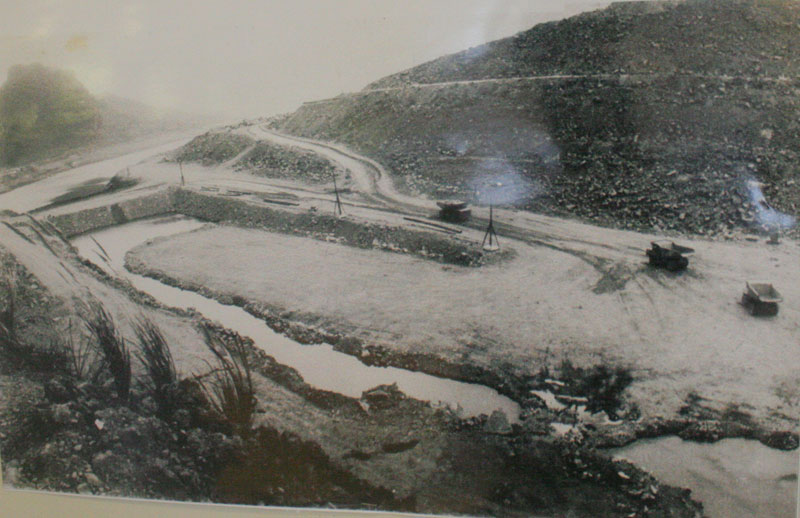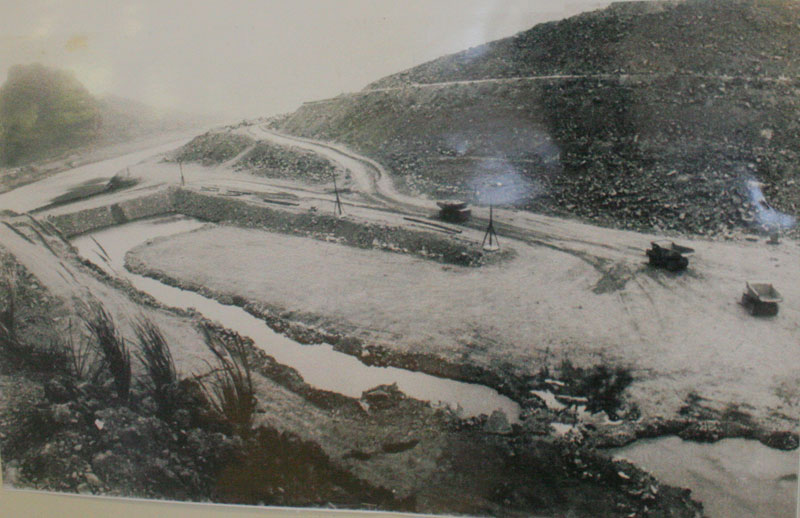
HBO – The Hoa Binh Hydropower Plant has been an attractive destination to tourists when visiting Hoa Binh Lake.

The plant has a total capacity of 1,920 MW and an annual
electricity output of more than 9.5 billion KWh.
Construction on the project started at a time when the country
just ended the resistance war against the US and was facing a lot of
difficulties and deprivation, with complicated construction conditions and high
pressure on progress. Tens of thousands of youths from rural areas in the
northern region volunteered to work at the construction site – the Communist
Youth Site. More than 500 engineers and technicians, who had freshly graduated
from universities and vocational schools, and 800 experts who were project
managers, engineers, and skilled workers of the Soviet Union were sent to the
site.
Hoa Binh Hydropower Plant on the
day the river was separated and the dam was built.
Officials, soldiers, engineers, workers and Soviet Union experts
worked hard with the slogan "For the future electric current of the nation”.
Therefore, the construction progress was never interrupted. The high resolve,
energy, creativeness and high consensus created a lot of miracles, and many
records were set at the construction site.
On January 12, 1983, the first phase of the Da River separation
was carried out, while construction on projects to separate the Da River in the
second phase finished on January 9, 1986.
In late 1988, after nine years since the construction started, the
first turbine began generating electricity and the Hoa Binh Hydropower Plant
was officially put into operation. Other turbines then started generating
electricity as scheduled.
On December 20, 1994, the plant with eight turbines and a total
capacity of 1,920 MW was inaugurated and connected to the national grid, showing
the breakthrough development of the Vietnamese energy sector and the
electricity sector in particular.
For the nation’s electric current, 168 Vietnamese and Soviet Union
officials, experts and workers laid down their lives during the construction
process, becoming a symbol of sacrifice and devotion for the friendship between
Vietnam and the Soviet Union, and now the Russian Federation. Since its operation,
the Hoa Binh Hydropower Plant has generated over 200 billion kWh of
electricity, contributing to the country’s economic development./.
Located just a 20-minute drive from Hoa Binh City, Ora Hill Farmstay & Glamping Hoa Binh is a captivating new destination nestled in Mo hamlet, Bình Thanh commune, Cao Phong district. Combining farming with leisure, this tranquil retreat is perfect for those seeking balance, joy, and an immersive experience in the expansive beauty of nature.
Muong Bi - Tan Lac is renowned as one of the four famous Muong regions in Hoa Binh province. Blessed by nature with a favourable climate and stunning landscapes, Tan Lac holds great advantages for tourism development. The local tourism industry has made remarkable strides in recent times thanks to the attention and support from the local authorities and sectors.
With its strategic location, well-developed transport network, and diverse soil and climatic conditions, Hoa Binh is emerging as a must-visit destination in Vietnam's northwestern tourism corridor. The province boasts numerous attractions, including the Kim Boi hot springs (Kim Boi district), the Dau Rong cave complex (Cao Phong), the Mai Chau valley (Mai Chau), and the iconic Hoa Binh hydropower plant.
The northern mountainous province of Hoa Binh has been listed among the 71 most beautiful places to visit worldwide by the prestigious US travel magazine Condé Nast Traveller.
Hoa Binh province’s rich natural and cultural resources position it as a prime location for developing community-based tourism (CBT). In recent years, support from central and provincial policies, as well as assistance from non-governmental organisations, have encouraged local ethnic minority and mountainous communities to actively engage in the sector.



